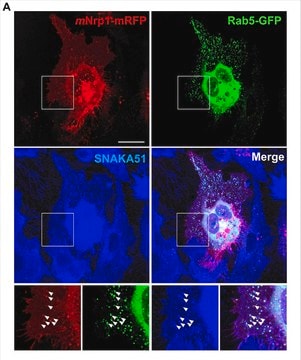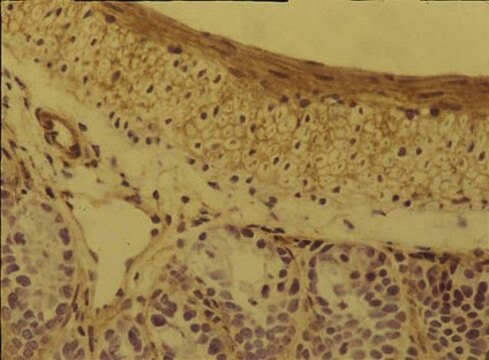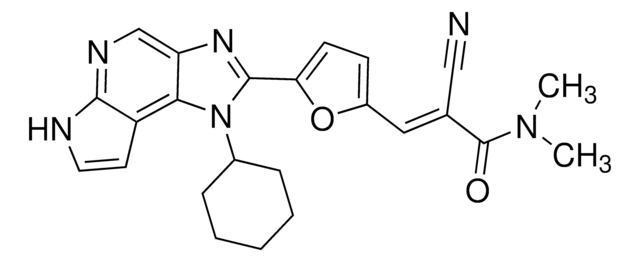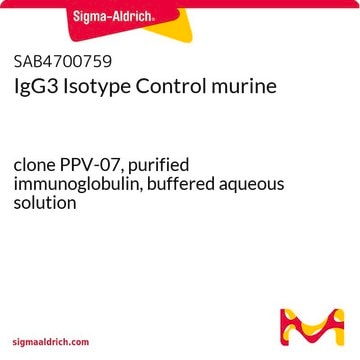MAB1956Z
Anti-Integrin αVβ1 Antibody
CHEMICON®, mouse monoclonal, P1D6
Synonim(y):
CD49e, MAB1956
Wybierz wielkość
Wybierz wielkość
About This Item
Polecane produkty
Nazwa produktu
Anti-Integrin α5 Antibody, clone P1D6, azide free, clone P1D6, Chemicon®, from mouse
pochodzenie biologiczne
mouse
Poziom jakości
forma przeciwciała
purified antibody
rodzaj przeciwciała
primary antibodies
klon
P1D6, monoclonal
reaktywność gatunkowa
human
producent / nazwa handlowa
Chemicon®
metody
immunohistochemistry: suitable
izotyp
IgG3
numer dostępu NCBI
numer dostępu UniProt
Warunki transportu
wet ice
docelowa modyfikacja potranslacyjna
unmodified
informacje o genach
human ... ITGA5(3678)
Opis ogólny
Specyficzność
Zastosowanie
MAB1956Z is not reactive with the denatured alpha 5 subunit. For immunoblotting, a dot blot is suggested as an alternative to western blotting.
Cell Structure
Integrins
Postać fizyczna
Przechowywanie i stabilność
Komentarz do analizy
Widely expressed, ovary
Inne uwagi
Informacje prawne
Oświadczenie o zrzeczeniu się odpowiedzialności
Nie możesz znaleźć właściwego produktu?
Wypróbuj nasz Narzędzie selektora produktów.
Kod klasy składowania
12 - Non Combustible Liquids
Klasa zagrożenia wodnego (WGK)
WGK 2
Temperatura zapłonu (°F)
Not applicable
Temperatura zapłonu (°C)
Not applicable
Certyfikaty analizy (CoA)
Poszukaj Certyfikaty analizy (CoA), wpisując numer partii/serii produktów. Numery serii i partii można znaleźć na etykiecie produktu po słowach „seria” lub „partia”.
Masz już ten produkt?
Dokumenty związane z niedawno zakupionymi produktami zostały zamieszczone w Bibliotece dokumentów.
Active Filters
Nasz zespół naukowców ma doświadczenie we wszystkich obszarach badań, w tym w naukach przyrodniczych, materiałoznawstwie, syntezie chemicznej, chromatografii, analityce i wielu innych dziedzinach.
Skontaktuj się z zespołem ds. pomocy technicznej








